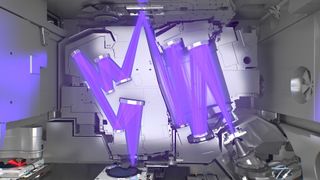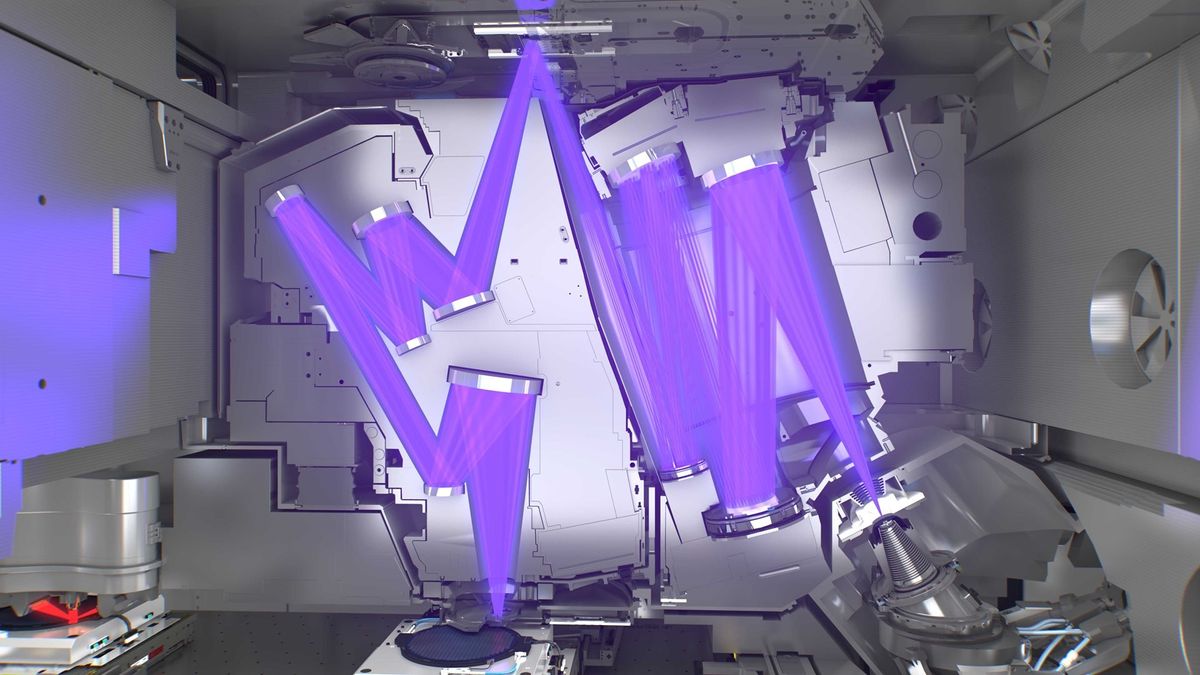onebyone
SENIOR MEMBER

- Joined
- Jul 2, 2014
- Messages
- 7,550
- Reaction score
- -6
- Country
- Location
Huawei EUV Scanner Patent Suggests Sub-7nm Chips for China
By Anton Shilovpublished about 19 hours ago
Huawei files a patent application covering EUV scanners.

(Image credit: ASML)
Huawei has filed a patent application covering an extreme ultraviolet (EUV) lithography scanner, according to UDN. If the company builds such a scanner and achieves decent productivity, uptime, and yields, Chinese chipmakers could produce chips on sub-7nm-class technologies. The only question is when.
In mid-November, Huawei filed an application with the State Intellectual Property Office for a patent covering an EUV scanner and its key components. The patent application number is 202110524685X, reports MyDrivers.
The patent application appears to cover all crucial components of an EUV scanner, including a 13.5 nm EUV light generator (light source), a set of reflecting mirrors, the lithography system, and 'control management technologies' (we would speculate that this is how they call metrology), according to descriptions published by various media sources.
Filing a patent is not equal to being able to build an EUV scanner, which is a highly complex machine featuring numerous state-of-the-art components that have to work perfectly in concert and for prolonged amounts of time. Furthermore, even with an EUV tool at hand, chipmakers still have to figure out the right pellicles for masks, resists, and many other things necessary for high-volume production.
An EUV scanner with a 0.33 numerical aperture is the pinnacle of today's semiconductor production tools. Numerous companies attempted to develop such a tool, but only ASML succeeded after over ten years of development and with financial support from Intel, Samsung, and TSMC. Today, Samsung, SK Hynix, and TSMC actively use EUV tools from ASML, but Intel has yet to start high-volume chip production using these tools.
For now, only Intel, Micron, Samsung, SK Hynix, and TSMC either use or plan to use EUV scanners. Moreover, only these five companies have developed (or plan to develop) process technologies sophisticated enough to take advantage of EUV scanners. Meanwhile, China-based SMIC could not get an already procured EUV tool to develop its own EUV-based fabrication process due to the Wassenaar arrangement. Therefore, it is evident that demand for EUV scanners potentially exists in China, and apparently, Huawei was eager to address it.
As a world-class high-tech conglomerate with some $100 billion in annual revenue, Huawei pursues different goals and develops many technologies. The company's semiconductor production ambitions are well known, and they are not limited to chip production but also to building wafer fab equipment. Huawei's WFE efforts are advancing pretty well as the company applied for a patent covering an EUV scanner.

Huawei EUV Scanner Patent Suggests Sub-7nm Chips for China
Huawei files a patent application covering EUV scanners.








